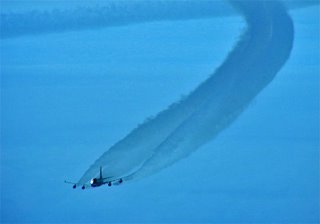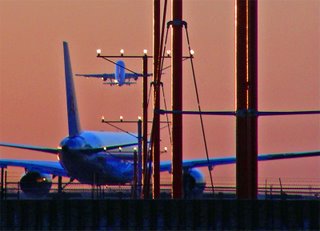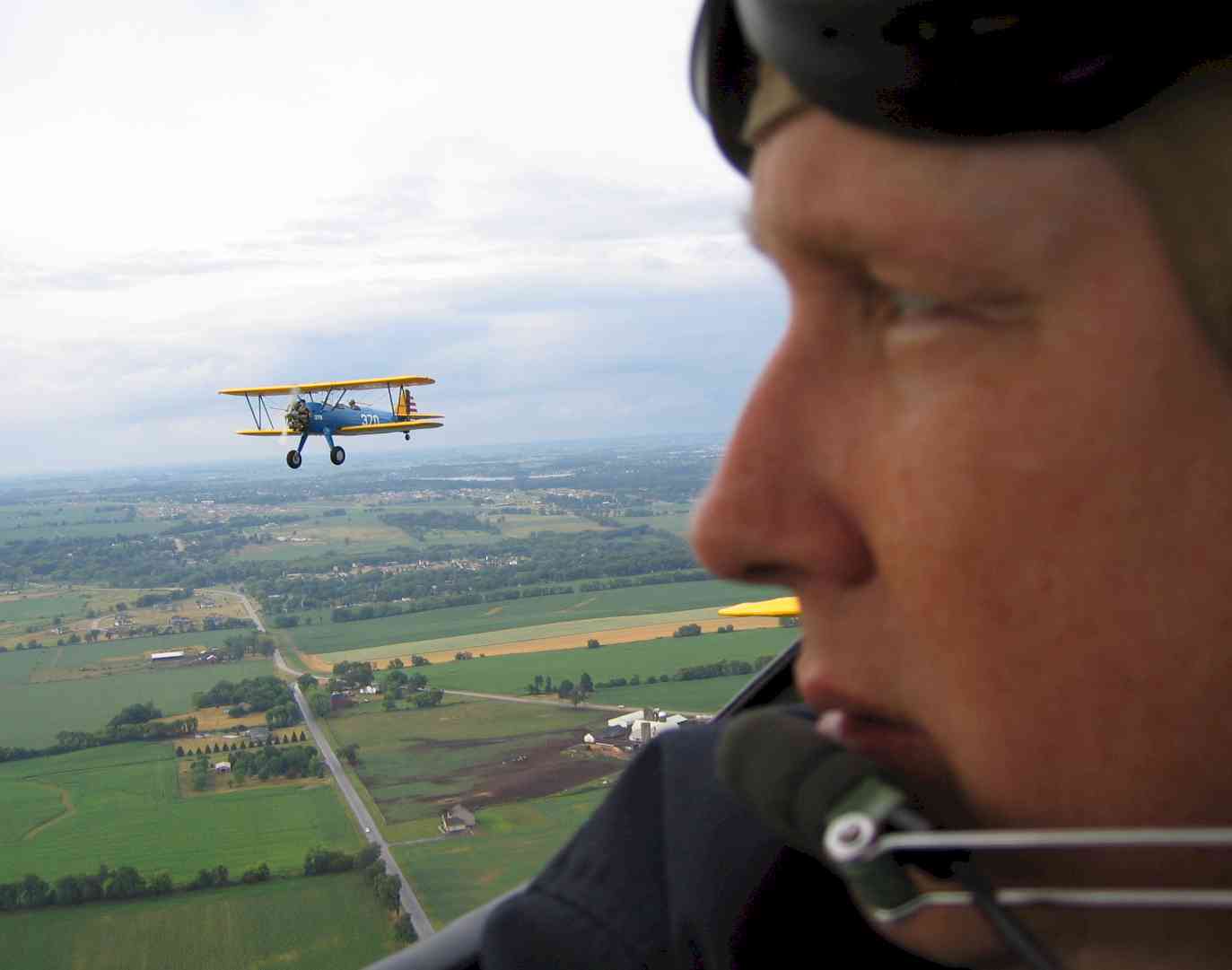 Safe Arrival
Safe Arrival
Copyright 2007, V1VrV2
You know, there ought to be a Federal law that prohibits university eggheads from publishing anything related to aviation unless they hold an Airline Transport Pilot (ATP) rating. It’s my opinion that far too much money gets spent on worthless “research” like this – research that rediscovers facts we already know, makes no useful contribution to anything, and is full of fundamental flaws. Here’s the latest farce from the world of academia:
A pair of researchers at Johns Hopkins University in Baltimore has released the results of their study which found that general aviation (GA) aircraft are 82 times more likely to be involved in a fatal crash than airliners. Their research was published in the Journal of the American Medical Association.
According to a Reuters article, “the researchers called so-called general aviation flights a public safety problem and urged the Federal Aviation Administration and the National Transportation Safety Administration to do more to improve safety of small airplanes.”
“I would like people to realize that the huge majority of aviation deaths occur in general aviation,” said epidemiologist Susan Baker, who wrote the analysis with Dr. Guohua Li, a professor of emergency medicine. According to the study, over 91 percent of U.S aviation crashes involved General Aviation. The rate of fatal crashes per 100,000 flight hours has remained steady for many years at around 1.3 in GA, versus 0.015 for the airlines. This means that the airlines are 82 times safer than GA.
The article defines General Aviation and lists some of the types of flying encompassed by the definition: Recreation, business jets, emergency medical services, sightseeing, flight training, traffic reporting, search and rescue, firefighting, crop dusting, logging or other purposes.
OK, first of all, is General Aviation really a “public safety” problem? Other than the extremely rare times when a small plane crash-lands in someone’s back yard, how much is the “public” really involved in GA? Recreational General Aviation is a fairly esoteric endeavor pursued by only a small percentage of the population. It’s an activity that requires a high level of training and what I’ll call “specific intent of purpose.” In other words, it’s not something a person can simply decide to do one day, like playing golf, renting a jet-ski, or attempting to ride a unicycle. For this reason, people who fly must involve themselves in it for a long period of time in order receive even the lowest levels of qualification and access to the activity itself. The other forms of General Aviation are even more esoteric and specialized.
Flying airplanes is a skill-set that is perishable and subject to all sorts of variables – atmospheric and weather conditions, natural aptitude, personal motivations, pilot distractions, health issues, maintenance factors, infrastructure and air traffic control limitations, communications, and many others. These factors affect every airplane that leaves the ground, whether it’s piloted by a 20,000-hour professional or by a newbie student pilot. The difference is that, in airline flying, these variables are highly controlled and their consequences mitigated, partially because of the vast difference is capability of the airplanes and the behind-the-scenes maintenance and operational guidance that supports them, and partially because of the vast depth of experience and judgment of the crewmembers that fly them. Airline companies are in the business of making money. They make money by safely flying millions of people each year from Point A to Point B. Crashing airplanes for any reason is highly undesirable to their bottom line, and they go to extraordinary and expensive lengths to assure the safe conduct of their flights.
My point is that comparing General Aviation with the airlines is like comparing a one-person, 12-foot sailboat with a 1,000-foot long cruise ship. There’s simply no point in comparing them. Other than the fact that they’re both “watercraft,” and they’re both commanded by human beings, they are of a completely different nature.
Worse, the Johns Hopkins study includes types of general aviation operations that are of an inherently dangerous nature, like crop dusting and firefighting, and lumps them in with far less risky types of operations like business and corporate transportation. If comparing airline operations with General Aviation as a whole is pointless, then comparing these diverse subsets of GA is at least as pointless. The study might have narrowed its focus and compared only business aviation with the airlines, but if it did, those results were not released in the reports that ran in the media.
What, exactly, are we to glean from this study? Should the government require advanced ratings and thousands of flight hours in order for a pilot to qualify to fly a 4-seat Piper Archer? Should the FAA mandate the installation of $10 million worth of weather radar, traffic collision avoidance systems, ground proximity warning systems, auto-land systems, autopilots, IFR instrumentation and other improvements in all 1940s-vintage Piper Cubs (an airplane worth around $25,000)? Should flight schools and Fixed-Base Operators (FBOs) provide customized dispatch services utilizing the latest digital satellite datalink capabilities to upload real-time flight planning and weather routing information to the cockpits of each and every weekend pilot who rents a small plane from his local airport to go sightseeing with his family every weekend? Should manufacturers re-engineer every 450-pound recreational ultralight airplane with 40G-capable seats, six-point, computerized airbag-equipped harnesses, and titanium roll cages? Should agricultural applicators (crop dusters) be banned from flying low, since low-flying is cited as a dangerous endeavor?
Of course General Aviation has a higher accident rate than the airlines. It always will, and no amount of money or technology can make the GA accident rate as low as commercial aviation. Driving a jet-ski will never be as safe as taking a Caribbean cruise on an ocean liner. While we can certainly try to improve the GA accident rate (and we’re always trying), we cannot regulate or even mandate it down to anywhere near the levels the airlines enjoy. It’s just an economic and technological reality.
I don’t mind if people want to research topics like this. I even support the efforts of such research if something good and truly reasonable comes from it. Aviation safety is a concern to all aviators. My concern is with the ridiculous overall premise of this particular study, the highlights of which were widely reported in the mass media for a two day period, and were read and/or heard by millions of unsuspecting laypeople.
Why are researchers allowed, and even encouraged, to grandstand in this manner? Maybe media outlets are so desperate for filler that they’ll print anything that sounds interesting, regardless of its validity. Maybe these particular researchers (one of whom is allegedly a private pilot) simply decided to spend their grant money on an easy-to-research topic that was almost guaranteed to get their name in the papers. Whatever the reason, it’s another example of spurious and foolish science, foisted upon us by people who ought to have better things to do.














